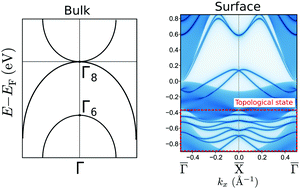Chemically driven surface effects in polar intermetallic topological insulators A3Bi
Abstract
Surface electronic spectra, surface and bulk properties as well as the underlying chemical bonding characteristics in topological insulators with complex bonding patterns are considered for the example of cubic, polar intermetallics KNa2Bi, K3Bi and Rb3Bi (with the general formula A3Bi, A – alkali metal). Chemical bonding in A3Bi has a delocalized, polar character as elucidated by the Bader charge analysis in bulk and at the surface, by real-space bonding indicators and by the maximally localized-Wannier-function technique. We underpin emergent surface features in the electronic spectra that are driven by chemical bonding. The organization of these trivial and topological surface states is juxtaposed with the trends in the Bader charges at the surface and surface contributions to the on-site matrix elements of the ab initio Hamiltonian in the localized basis. The surface states are essentially affected by a large positive or negative on-site contribution induced near the vacuum boundary, where the sign of the contribution depends on the surface termination. Based on our findings, the experimentally observed surface features in the related Na3Bi compound can be correctly interpreted. The listed aspects distinguish the title compounds from the HgX (X – chalcogen) series with the same fingerprint bulk-band dispersion near the Fermi level and similar symmetries, but with covalent bonding character. Surface effects investigated for A3Bi also can be expected for a wide range of compounds of various topological classes with a similar bonding type, and will define their surface reactivity.



 Please wait while we load your content...
Please wait while we load your content...